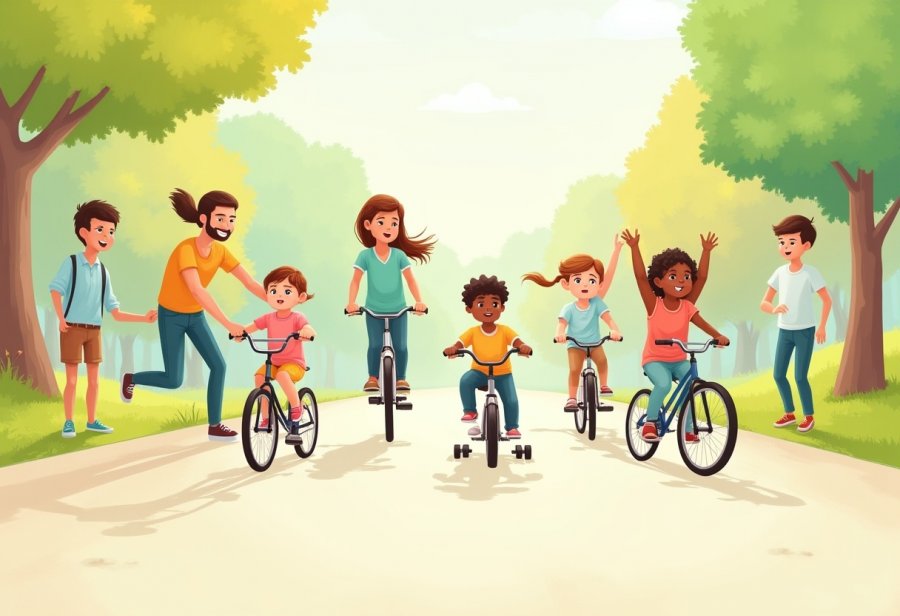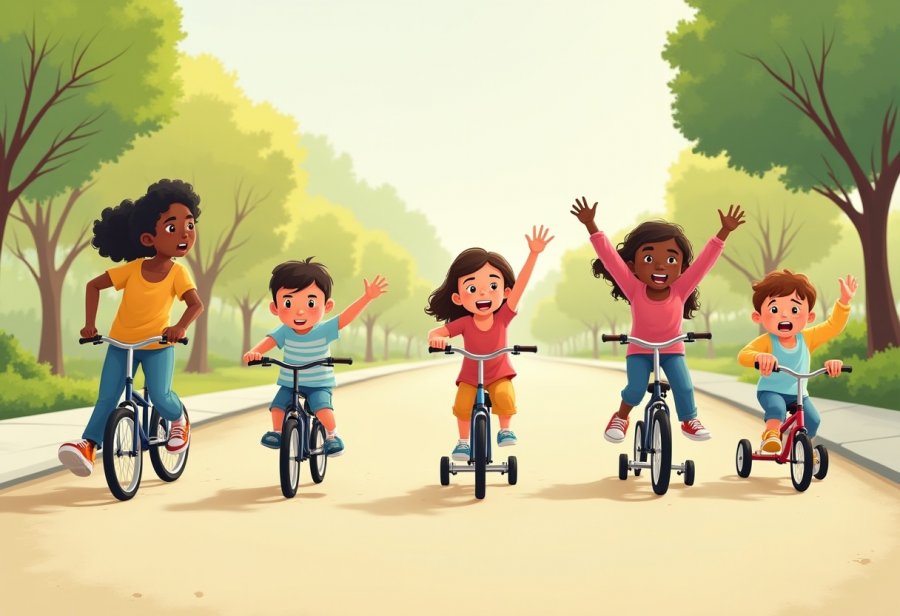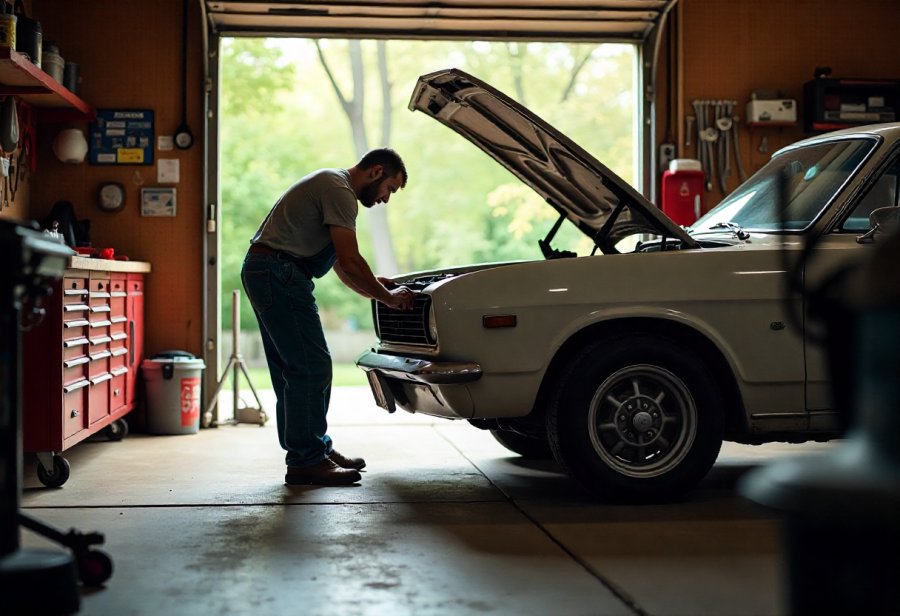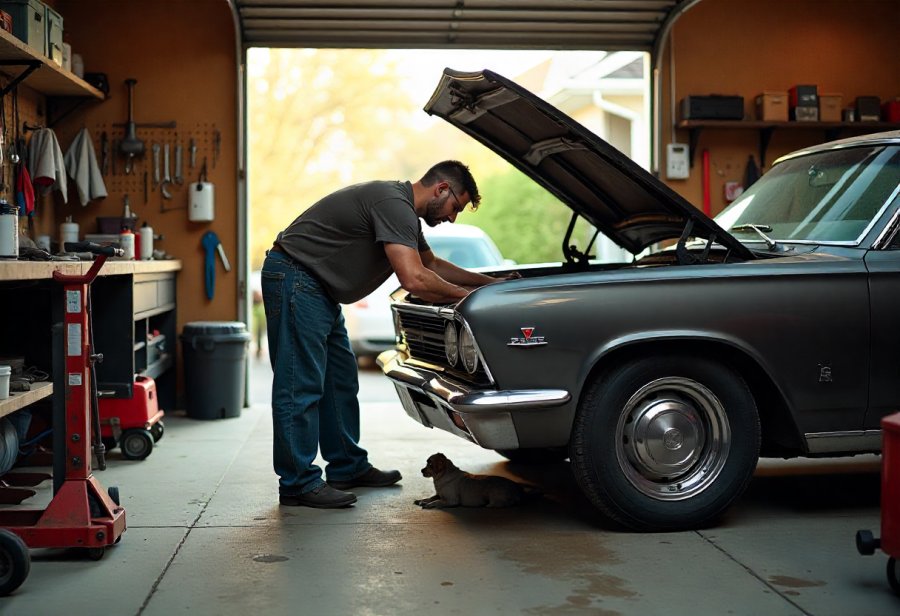Learning to ride a bike is more than just mastering balance; it’s a profound rite of passage that embodies courage, family bonds, and personal growth. As children wobble, fall, and eventually pedal with confidence, they develop resilience and independence—traits that extend well beyond the driveway. This milestone is steeped in cultural history and evolving practices, from traditional family teachings to cutting-edge technology like smart bikes and virtual reality tools that enhance confidence while prioritizing safety. But what weighs more heavily: the thrill of freedom or the fear of falling? As innovations make learning safer and more inclusive, the journey becomes an empowering experience for every child. This timeless act of riding a bike continues to symbolize hope, perseverance, and adventure—raising the question: how do we balance the natural fears with the exhilarating promise of independence?

The Joyful Milestone of Learning to Ride a Bike: Building Confidence and Emotional Growth
Learning to ride a bike isn’t just about balancing on two wheels; it’s a milestone filled with emotion and meaning. For children, it often marks their first step toward independence—an exciting moment that opens up a whole new world of exploration. The joy of wobbling, the thrill of steadying themselves, and the pride in finally pedaling on their own create memories that last a lifetime. For parents and families, teaching a child to ride becomes a shared journey, filled with patience, encouragement, and pride. Those small wobbling starts, steadying hands, and triumphant smiles aren’t just about the mechanics—they’re about building trust and fostering emotional growth.
This experience isn’t solely about mastering balance; it’s a rite of passage that boosts confidence and resilience. Children face fears of falling and getting hurt, but with gentle support and reassurance, those fears can transform into excitement. Every small victory—whether holding a steady line or pedaling across the driveway—serves as a building block for self-esteem. These moments of achievement motivate children to try again, helping them develop a mindset of perseverance that extends beyond biking. It’s about learning that setbacks are just part of the process, and with patience, they can overcome any challenge.
Teaching a child to ride is also a deeply family-centered activity. It’s a bonding experience that creates cherished memories of shared effort and celebration. Watching a child wobble, fall, and get back up teaches resilience and persistence. These lessons stay with children long after they’ve mastered the skill, shaping their approach to future challenges. The process reinforces that growth often involves falling and trying again, and that support from loved ones makes all the difference. It’s a powerful reminder that learning isn’t just about the destination but about the journey itself.
As children finally find their balance and pedal confidently on their own, they experience a profound sense of achievement. This milestone sparks curiosity and a desire to explore further, nurturing a spirit of adventure and independence. It’s a moment that not only boosts their confidence but also helps them see themselves as capable and brave. For parents, witnessing this transformation is a reminder that patience and support turn a challenging process into a joyful rite of passage. These early lessons in resilience and independence lay the foundation for a lifetime of confidence and exploration.
Cycles Through Time: The Cultural Significance and Evolution of Riding
Learning to ride a bike is more than just a personal milestone; it’s a tradition that spans over a century and crosses many cultures. From the early days of wooden and metal frames to today’s lightweight, high-tech designs, bicycles have long symbolized childhood independence and growth. For generations, teaching kids to ride has been a shared family experience, emphasizing patience, perseverance, and a sense of adventure.
Throughout history, bicycles evolved from simple transportation tools into powerful symbols of freedom. In many societies, the first ride represented more than just balance; it marked a step toward self-reliance and exploration. Communities often celebrated this achievement with local events, neighborhood rides, or friendly competitions, reinforcing the idea that cycling is a social activity that brings people together, regardless of age.
Culturally, learning to ride has taken on different meanings around the world. In the early 20th century, bikes became icons of progress, especially in urbanizing areas where mobility meant opportunity. The image of a child pedaling confidently down a street became a universal symbol of hope, independence, and possibility. After World War II, cycling experienced a resurgence as outdoor activities gained popularity, embedding bikes deeper into family life and childhood routines.
In many regions, riding a bike is connected to core values like resilience and perseverance. It’s often seen as a rite of passage that teaches patience and problem-solving. For some, it’s a cherished tradition passed down from grandparents, strengthening family bonds and cultural identity. Over time, bike designs moved from heavy, basic frames to lightweight, versatile models, but the core message remained: learning to ride fosters independence, confidence, and resilience.
Today, the cultural significance of teaching kids to ride continues to evolve. Safety and inclusivity are at the forefront, with adaptive bikes and community programs making cycling accessible to everyone. Local initiatives, bike safety days, and group rides promote outdoor activity, social connection, and environmental awareness, transforming riding from a personal achievement into a shared social experience.
The act of learning to ride reflects broader societal values—courage, persistence, and the joy of discovery. It’s a milestone that ties generations together, creating memories and lessons that last a lifetime. As technology and attitudes continue to change, the fundamental symbolism remains: riding a bike is about more than moving from point A to B; it’s about growth, independence, and the timeless pursuit of adventure.

Innovations and Trends Shaping How Kids Learn to Ride Today
In recent years, teaching kids to ride has seen a notable shift toward methods that prioritize safety and confidence. One of the most popular innovations is the balance bike, designed without pedals to help children develop core skills like stability and steering early on. Many parents find that starting with a balance bike makes the transition to a traditional bicycle smoother and less intimidating, giving kids a foundation of confidence before they pedal. Alongside this, safety gear such as adjustable helmets and cushioned pads has become more comfortable and effective, encouraging consistent use and peace of mind for parents.
A key trend now emphasizes positive reinforcement and patience. Instead of rushing children through the process, adults and instructors celebrate small victories like maintaining balance for a few seconds or gliding across the driveway. This approach fosters a sense of achievement that keeps kids motivated and eager to try again. Practice spaces are often designed to be open and flat, providing safe environments where children can experiment and learn without the fear of falling or injury. Such spaces support repeated practice, essential for building confidence.
Community attitudes are increasingly inclusive, with local programs and group rides aimed at making cycling accessible to children from diverse backgrounds. Initiatives like bike safety days and beginner clinics promote outdoor activity and social engagement, making riding a joyful, shared experience. Adaptive bikes for children with disabilities are also more prevalent, ensuring that learning to ride isn’t limited by physical ability. These efforts highlight the importance of making cycling an inclusive activity that reinforces physical health, independence, and social bonds.
Technology now plays a growing role in making learning to ride more engaging. Virtual and augmented reality tools simulate riding environments, allowing children to practice balancing and steering in a controlled, virtual space. These innovations help reduce anxiety and boost confidence before stepping outside. Lightweight, adjustable bikes equipped with high-tech features make it easier for kids to find a comfortable fit, improving stability and control. Such tools aim to make the learning process more accessible, fun, and less daunting.
Personalized teaching strategies have gained traction as well. Recognizing that every child learns at their own pace, instructors and parents tailor their approach accordingly. Some children may need extra balance exercises, while others quickly progress to pedaling. This flexibility ensures that each child feels supported and enjoys the experience, preventing frustration and fostering a positive attitude toward learning. The focus remains on nurturing a love for cycling rather than pushing for perfection.
Safety innovations are set to improve even further. Helmets with enhanced impact absorption, lightweight protective gear, and comfortable padding are becoming standard, encouraging consistent use. Bikes are evolving with adjustable frames and lightweight materials, making it easier for children to develop proper posture and control from the start. These advancements help children feel secure and ready to explore more challenging terrains as they grow more confident.
Looking ahead, the future of learning to ride is bright with ongoing technological and community-driven innovations. Smart bikes with sensors and feedback systems will guide children through balancing and steering, offering real-time tips that adapt to their progress. Virtual riding environments will become more sophisticated, providing safe spaces for practice. As awareness around inclusivity and safety continues to grow, more accessible and engaging options will emerge, helping children of all abilities embrace cycling as a lifelong activity. These trends ensure that learning to ride remains a joyful, empowering milestone, fostering independence, resilience, and a love of adventure.
For parents and educators looking to stay updated on the latest innovations in children’s cycling education, exploring resources like learning to ride can provide valuable tips and insights. Embracing these emerging trends can make the experience of learning to ride not only safer and more effective but also more enjoyable for children, fostering a lifelong love of cycling.
Parent and Instructor Tips: Step-by-Step Guidance for Teaching Kids to Ride
Helping a child learn to ride a bike calls for patience, clarity, and a supportive attitude. Starting with a balance bike or removing pedals from a regular bike allows kids to focus on developing stability and steering without the added challenge of pedaling. This initial step builds confidence and coordination, making the transition to a full bike smoother and less intimidating. Choose a flat, open space free of obstacles where your child can practice comfortably, giving them room to wobble, fall, and get back up without feeling overwhelmed.
Encouragement is key throughout the process. Celebrate small victories, like maintaining balance for a few seconds or gliding a short distance. Positive reinforcement boosts their confidence and keeps the experience enjoyable. Support your child by holding the seat or the back of the bike, providing steady guidance without taking control. This balance of support and independence allows them to learn at their own pace and feel a sense of achievement.
Patience is crucial, especially when setbacks happen. Falls are a natural part of learning, so avoid rushing or pressuring your child. Instead, see each fall as a learning opportunity and reassure them that mistakes are normal. Keep the environment relaxed and fun, emphasizing progress over perfection. Children pick up on your attitude, so staying calm and encouraging fosters resilience and a positive mindset.
Create a safe practice environment by choosing gentle slopes or flat surfaces, steering clear of busy roads or uneven terrain until your child gains more confidence. Always use protective gear like helmets, knee pads, and elbow pads to ensure safety. Feeling secure in their gear helps children focus on riding rather than worrying about falling. As they improve, introduce more challenging terrain gradually, always prioritizing their comfort and safety.
Every child learns at their own pace. Some may quickly master balancing, while others need more time and practice. Pay attention to their cues and adjust your approach accordingly. If they seem hesitant or scared, spend extra time on balance exercises or take breaks. Respecting their individual needs builds trust and keeps the experience positive, preventing frustration and fostering a love for cycling.
Stay involved and enthusiastic throughout every step. Celebrate their successes, cheer them on, and reassure them during setbacks. Your support shows belief in their abilities, motivating them to keep trying. As they start pedaling independently, you’ll witness their confidence grow, marking a memorable milestone in their journey toward independence.
Remember, learning to ride is more than just mastering a skill — it’s about nurturing confidence, resilience, and a sense of adventure. By approaching this process with patience and encouragement, you turn what can be a challenging experience into a joyful shared achievement. Keep the focus on progress, celebrate every small victory, and enjoy the special moments that come with watching your child become a confident rider.

Gazing Into the Future: Technology and Community Initiatives Transforming Cycling Education
Advancements in technology are set to revolutionize how children learn to ride in the coming years. Smart bikes equipped with sensors and feedback systems will guide young riders through balancing and steering, offering real-time advice tailored to their progress. These bikes can automatically adjust difficulty levels, making the learning process more personalized and less frustrating. Virtual reality (VR) and augmented reality (AR) tools are also emerging as engaging training options, allowing children to practice in simulated environments that build confidence before hitting the real road. Such innovations help reduce anxiety and make the transition from virtual to outdoor riding smoother.
Safety will remain at the forefront of future developments. Helmets with enhanced impact absorption, lightweight protective gear, and more comfortable padding are becoming standard, encouraging children to wear safety equipment consistently. Bikes will evolve with adjustable, lightweight frames designed to fit children’s different sizes and stages, promoting proper posture and control from the start. These improvements aim to make riding safer and more accessible, fostering a sense of security that motivates kids to explore more challenging terrains as their skills grow.
Community programs and initiatives are expected to expand, emphasizing outdoor activity and social engagement around cycling. Schools and local groups will likely host more beginner clinics, group rides, and safety events, creating a supportive environment that celebrates progress and camaraderie. Inclusive programs, including adaptive bikes and specialized training for children with disabilities, will continue to grow, ensuring that learning to ride is a possibility for everyone. This broader approach not only promotes physical health but also reinforces values of resilience, independence, and shared achievement.
Digital platforms will become vital tools for instruction and support. Interactive tutorials, step-by-step videos, and virtual coaching sessions will make expert advice accessible regardless of location. These resources will complement hands-on practice, helping parents and instructors tailor their guidance to each child’s unique pace and needs. As these tools become more sophisticated and user-friendly, they will empower more families to confidently teach their children, making the milestone of learning to ride more attainable and enjoyable.
Personalization will dominate future training strategies. Recognizing that each child learns differently, instructors will increasingly adapt their approaches—spending more time on balance exercises for some, or progressing quickly to pedaling for others. This flexible, child-centered method will foster a positive, supportive experience that keeps motivation high. When children feel supported and understood, they’re more likely to develop a lifelong love for cycling, along with resilience and independence.
In parallel, innovations in safety gear will continue to evolve, making protective equipment more comfortable and effective. Helmets with smart impact sensors, lightweight pads, and breathable materials will encourage consistent use. Bikes themselves will be lighter and more adjustable, designed to grow with children and accommodate various skill levels. These advancements will help eliminate barriers to learning, ensuring safety remains a seamless part of the journey.
Looking further ahead, the integration of artificial intelligence (AI) into cycling equipment promises to personalize training even more. AI-powered systems could analyze a child’s riding style, identify areas for improvement, and suggest tailored exercises, creating a truly customized learning experience. Combined with virtual environments, this technology will make practicing safer, more engaging, and more effective, fostering confidence before children even step outside.
Overall, the future of teaching children to ride is bright, driven by innovative technology and a growing commitment to inclusivity and safety. These developments will make cycling more accessible, enjoyable, and empowering for children of all backgrounds. As new tools and community efforts continue to grow, the timeless milestone of learning to ride will remain a powerful symbol of independence, resilience, and adventure—evolving but never losing its core magic.








